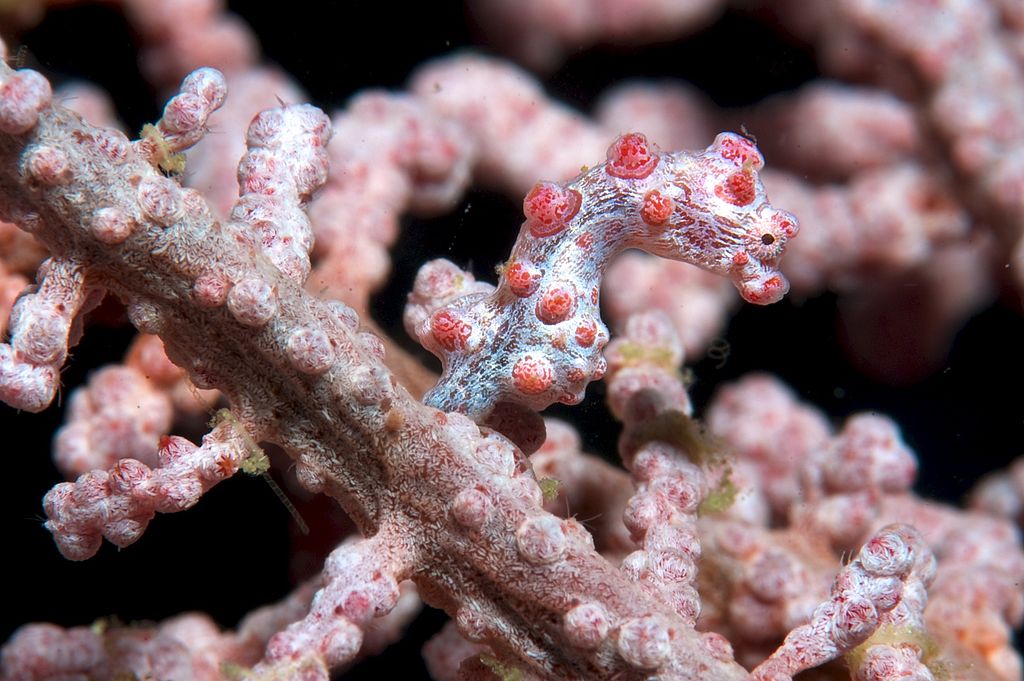Pygmy seahorse
(Hippocampus bargibanti)

Description
Hippocampus bargibanti,also known as Bargibant's seahorse or the pygmy seahorse,is a seahorse of the family Syngnathidae found in the central Indo-Pacific area.It is tiny,usually less than 2 centimetres (0.79 in) in size and lives exclusively on fan corals.There are two known color variations: grey with red tubercles,and yellow with orange tubercles.It is unknown whether these color varieties are linked to specific host gorgonians.The pygmy seahorse is well camouflaged,being extremely difficult to spot amongst the gorgonian coral it inhabits.So effective is this camouflage that the species wasn’t actually discovered until its host gorgonian was being examined in a laboratory.In 1969 a New Caledonian scientist,Georges Bargibant,was collecting specimens of Muricella spp gorgonians for the Nouméa museum and whilst one of these was on his dissection table he happened to notice a pair of tiny seahorses.The next year they were officially named by Whitley as "Bargibant's pygmy seahorse." Large,bulbous tubercles cover its body and match the colour and shape of the polyps of its host species of gorgonian coral,while its body matches the gorgonian stem.It is not known whether individuals can change colour if they change hosts,although the ability to change colour according to their surroundings does exist in some other seahorse species,such as Hippocampus whitei.Other distinctive pygmy seahorse characteristics include a fleshy head and body,a very short snout,and a long,prehensile tail.This is also one of the smallest seahorse species in the world,typically measuring less than 2 centimetres (0.79 in) in height.
Taxonomic tree:







